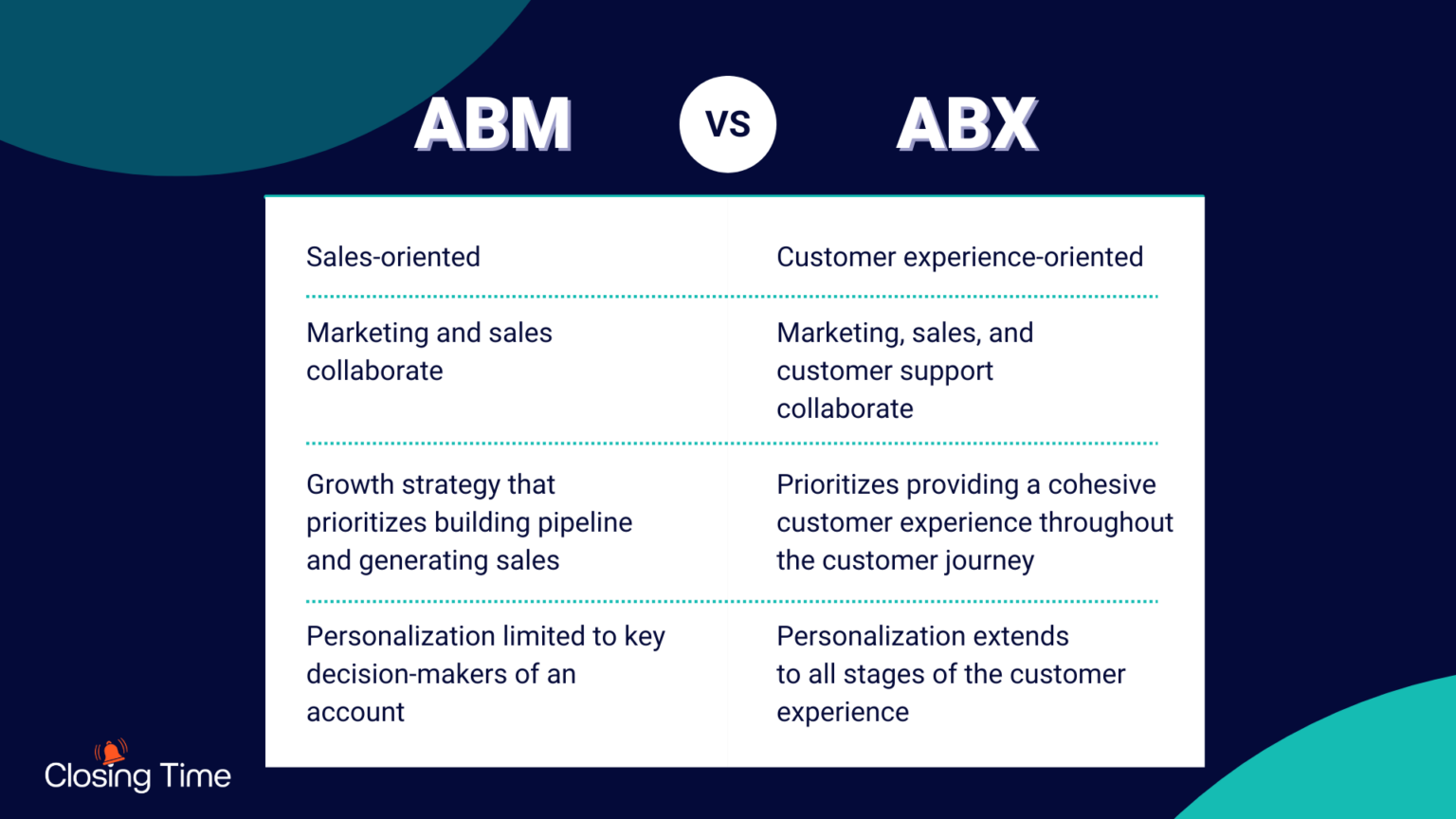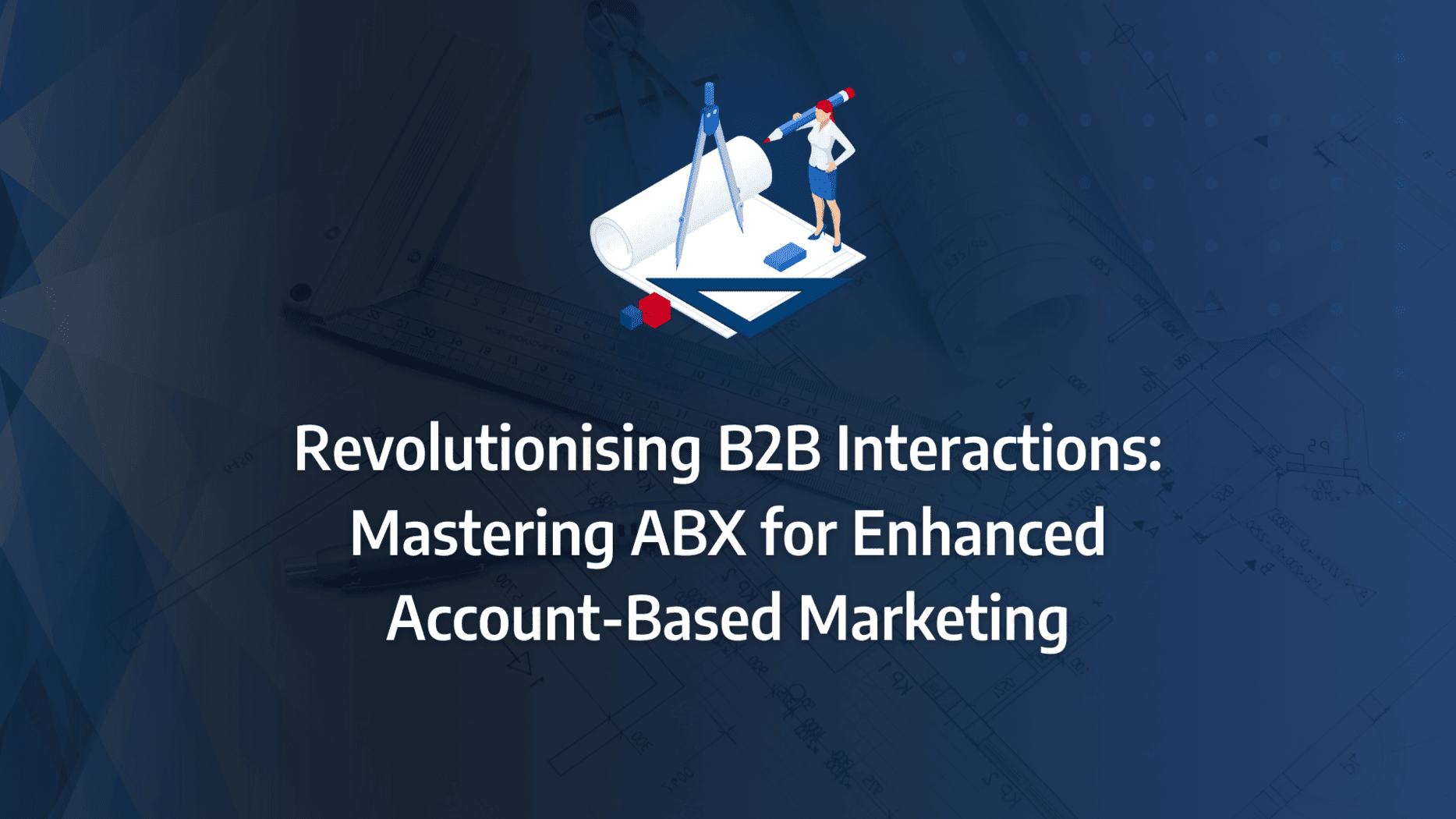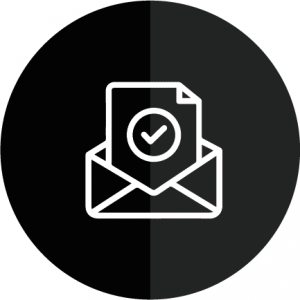Imagine transforming your entire approach to B2B marketing by focusing not just on targeting accounts, but on crafting an unparalleled experience for each one. If you’re familiar with ABM (Account-Based Marketing), you’ve likely wondered how to take it to the next level. Enter ABX—Account-Based Experience—a revolutionary strategy that doesn’t just aim to attract key accounts, but to engage them deeply through personalised, seamless interactions.
What if you could predict exactly what your target accounts need before they even realise it themselves? ABX promises just that, by integrating real-time insights with tailored content delivery, all within a framework designed to turn potential clients into long-term partners. But how exactly does ABX work, and why should you consider it over traditional ABM? Let’s dive into the strategies and examples that show how ABX can redefine your marketing success.
- ABX (Account-Based Experience) takes traditional ABM to the next level by focusing on creating personalised, seamless experiences for each target account.
- To implement ABX, start by mapping out the customer journey and aligning your content delivery to meet specific needs at each stage.
- Integrate real-time engagement strategies to ensure that your interactions with key accounts are timely, relevant, and impactful.
- Use ABX to shift from merely targeting accounts to building deep, long-lasting relationships that enhance customer loyalty and satisfaction.
- Leverage the right technology and tools to support your ABX strategy, ensuring seamless integration and execution across all touchpoints.
- ABX requires collaboration between sales and marketing teams to create a unified, customer-centric approach that drives better results.
- Measuring the success of ABX involves tracking customer satisfaction, engagement metrics, and ROI to continually refine and improve your strategy.
What distinguishes Account-Based Marketing from Account-Based Experience?
What is ABM?
Account-based marketing (ABM) is a concept that emerged in 1993 and gained traction in the early 2000s. By the mid-2000s, ABM had become a well-established and widely adopted method for marketing B2B products.
Organisations utilising ABM strategies tailor their messaging to specific businesses or buyers. As technology advanced, this practice evolved from targeted marketing meetings to personalised marketing content, phone calls, emails, and features such as microsites, like those created by Hushly for clients.
What is ABX?
The natural progression from ABM is Account-Based Experience (ABX), which integrates the principles of ABM into a comprehensive experience cycle that aligns sales, marketing, and service into a unified plan. This plan is centred on the buyer experience, which extends beyond the point of sale.
After a sale, it is crucial for the buyer to continue receiving a unique and targeted experience with the same level of engagement and access as they did during the sales process.
ABX strategies aim to ensure a seamless transition through all phases of the buying cycle. This coordination is typically managed through a top-down account management structure, involving authorised client liaisons who ensure effective communication and proper functioning across departments.
Implementing ABX requires a substantial amount of information, making it essential for the individual managing your key accounts to be well-versed in every aspect of your business and client needs.
ABX is a customer-centric approach that fuses the engaging elements of inbound marketing with the precise targeting of ABM. It strategically utilises data and insights to inform marketers and sales teams on the optimal times to reach out to customers, ensuring they are ready for a conversation.
In traditional ABM, the primary focus is on identifying valuable accounts and engaging them, regardless of their readiness to interact with your company. In contrast, ABX is committed to the customer throughout their entire buying journey. This approach allows businesses to recognise the best moments to engage and communicate with each account, thereby enhancing sales and marketing alignment and ensuring personalised interactions at every stage.
Source: DemandBase
Similarities and Differences Between ABM and ABX
Broadly, ABM serves as a precursor to ABX and forms a component of a broader ABX strategy. While they are grounded in similar principles, ABM and ABX are distinct concepts. A company may implement an ABM strategy without adopting ABX, or it might use an account-based sales and service approach without integrating similar marketing efforts.
Why ABM and ABX Are Different
- Different Purposes: ABM focuses solely on marketing, excluding sales or service. Thus, ABX is not a replacement but an evolution of ABM.
- ABX is Less Tested: Despite well-understood concepts, optimal ABX strategies are still being developed and tested.
- ABX is More Challenging: Unlike marketing, which can be internally tested, ABX requires real-time responses to challenges, testing your business’s ability to maintain B2B buyer satisfaction.

Why is ABX Important?
Account-Based Experience (ABX) is crucial because it prioritises the customer. Modern buyers seek personalised and seamless experiences, and ABX ensures they receive relevant information tailored to their needs.
ABX focuses on engaging the entire account rather than an individual. This is advantageous for B2B companies as it addresses the entire buying committee rather than a single stakeholder.
ABX also aligns internal teams. All customer-facing departments—sales, marketing, and customer success—must collaborate. This unified approach creates a cohesive narrative that resonates with customers.
What Matters Most?
The alignment of marketing and sales teams stands out as a critical factor in delivering a seamless account experience. Clients often find that when these teams collaborate effectively, the overall customer journey improves significantly. Additionally, understanding the customer journey at the account level reveals insights that are typically overlooked, opening avenues for deeper engagement. Regularly measuring account engagement metrics is essential; without this practice, companies miss the chance to refine their strategies and enhance the customer experience.Get In Touch
Core Concepts of an ABX Strategy
Components of the ABX Model
Given that ABX is an evolution of ABM, some core components remain the same, but there are significant enhancements. Let’s delve into these changes:
Marketing, Sales, and Customer Success Alignment
ABX prioritises customer relationships over account value. The promises of ABM are fulfilled through ABX by ensuring strong customer connections.
Prioritising the Right Accounts
Similar to ABM, ABX focuses on building customer relationships rather than merely converting leads.
Building robust customer relationships demands time and resources. Hence, not every identified account can be targeted. Prioritisation should be based on the suitability and value of each account.
More time and resources should be devoted to accounts that hold greater value, maximising conversion, retention, and customer lifetime value.
Leveraging the Right Tools, Technology, and Data
Effective implementation of ABX, like ABM, requires the right tools, technology, and data. Enhancing the customer experience and building strong relationships necessitates extensive insights.
Moreover, personalisation and content delivery are driven by behavioural insights about target accounts. For example, Salespanel can use behavioural data to tailor the experience of your accounts.
Using the right tools, technology, and data is critical to an effective ABX strategy. These enable the generation of insights that lead to precise personalisation and optimal engagement and content delivery.
Personalisation
While ABM limited personalisation to content delivered to key decision-makers, ABX extends personalisation to the overall customer experience at all stages.
Personalisation has numerous benefits. Although personalising content is impactful, extending this to the entire customer experience is essential for ABX. Building customer relationships requires a personal touch. With ABX, personalisation occurs as different decision-makers engage with the buying journey.
Moreover, this personalised customer experience must be ensured from the marketing stage to the customer success stage.

Best Practices for Successfully Implementing ABX Marketing
Team Training
Training your teams is vital. Educate your marketing, sales, and customer success teams on the ABX marketing programme and how to engage effectively with target accounts. Provide continuous training and support. Developing a step-by-step checklist for the sales team is recommended, as their daily operations will shift. Following up with accounts or MQAs differs from following up with leads. Quality supersedes quantity. More time is needed to research and build the buying committee. The more guidance you provide now, the higher the chances of your ABX strategy being successful.
Develop a Messaging and Content Framework
Create a messaging framework that addresses the specific needs and pain points of each segment. Tailor your messaging to each segment to enhance outreach effectiveness. Develop content tailored to each segment of your target accounts, including white papers, case studies, webinars, and other resources addressing each segment’s specific challenges and opportunities.
Foundation of Account Data for ABX Marketing
Implementing an account-based strategy can be particularly challenging without a cohesive view of accounts. At Marketo, for instance, essential data was dispersed across various CRMs, emails, and systems, creating a fragmented understanding between the marketing and sales departments.
Step 1: Consolidate First-Party Data
Begin by aggregating all your first-party data, which includes:
- Campaign information
- Lead details
- Contact records
- Activity logs
Gather this data from platforms like Salesforce, marketing automation tools, emails, and calendar systems. Properly organising and aligning this information with the correct accounts is critical.
Step 2: Incorporate Third-Party Data
Next, enhance your data with third-party insights such as industry details, geographical location, company size, and parent/child account relationships. For tech companies, utilising technographics to determine the technologies employed by target accounts is valuable. Additionally, intent data is essential for understanding what research activities accounts are engaged in and identifying signs of market readiness.
While it may seem daunting to compile all this information, it establishes a crucial foundation for your ABX strategy.
Step 3: Personalised and Relevant Account Engagement
The key to successful account engagement is relevance. Research shows that executives are more likely to respond to unsolicited marketing efforts if they find them pertinent to their business needs. In a crowded market, irrelevant messages are quickly overlooked.
- Insight Gathering for Relevance To maintain relevance, derive insights from your foundational data. Determine where each account is in their buying journey. Are they showing intent? What technologies are they using? Who are their competitors? Automating these insights helps maintain relevance across interactions.
- Selecting Interaction Channels Choose your engagement channels wisely. Human interactions such as outbound SDR calls, events, and executive-to-executive communications are critical in any ABX campaign. Pair these with highly personalised but less scalable methods like direct mail. Finally, bolster these efforts with scalable channels like digital advertising and website personalisation.
Our Tactical Recommendations
Integrating multi-channel strategies is key to enhancing account engagement; we often find that cohesive experiences across various touchpoints yield better results. Additionally, leveraging data analytics to identify high-value accounts can unlock significant opportunities, as many firms fail to use the right tools for insights. Finally, creating tailored outreach strategies for key decision-makers ensures that your messaging resonates, a step often neglected in broader marketing efforts.Get In Touch
What are the common challenges in implementing an ABX strategy?
- Underutilising Expensive Technology: Investing in technology aims to scale operations and simplify tasks. However, failing to reduce the time to value these investments leads companies to hire internal experts or external firms to ensure proper implementation and utilisation.
- Underinvesting in Sales Enablement: Sales enablement is critical for ABX strategy success due to its significant breadth and depth of responsibilities. Most ABX technology constantly evolves, leaving limited time for comprehensive training. Without adequate sales enablement, there’s a risk that sales development reps (SDRs) and account executives (AEs) might not fully embrace what could be seen as a marketing initiative.
- Unequal Treatment of Marketing Qualified Accounts (MQAs): Not all MQAs are equal. For instance, an intent-driven MQA may not have the same urgency as an MQA with significant engagement with sales and marketing. The treatment may vary internally regarding follow-up speed and approach.
- Lack of Agreed-Upon Playbooks: A common issue is the absence of agreed-upon playbooks. If an MQA is disqualified, are there documented reasons in your systems and processes? Have you identified a follow-up playbook to requalify these MQAs or maintain contact?
- Running Multiple Funnels: The ‘double funnel’ issue arises when an account-based approach is added to an existing lead-based approach, causing confusion in reporting. This can be resolved by clarifying the definitions of leads and accounts for accurate reporting.







